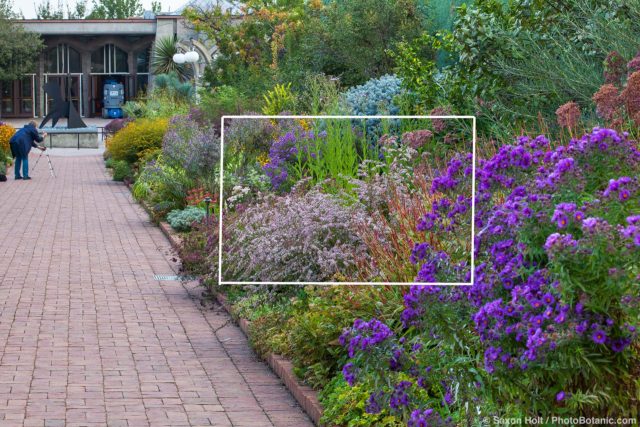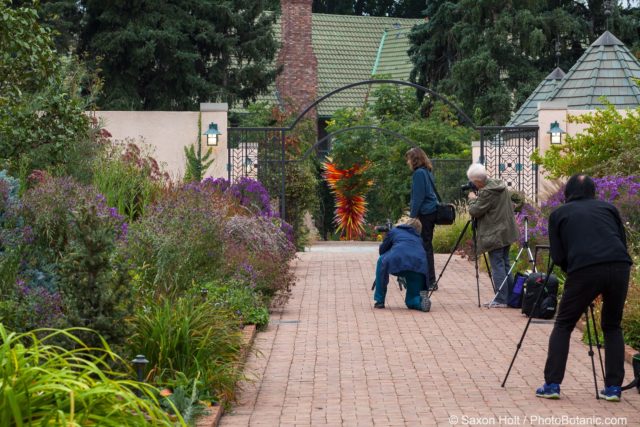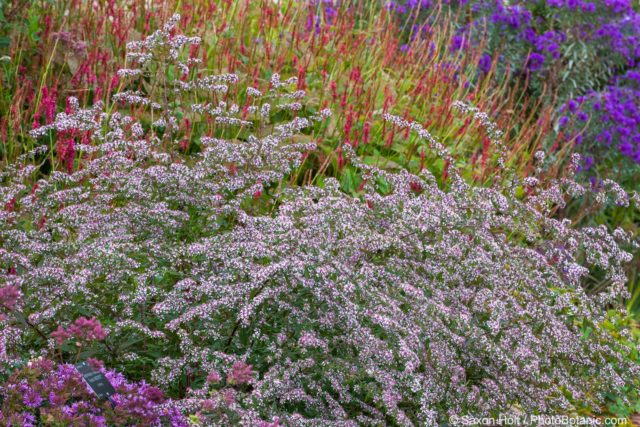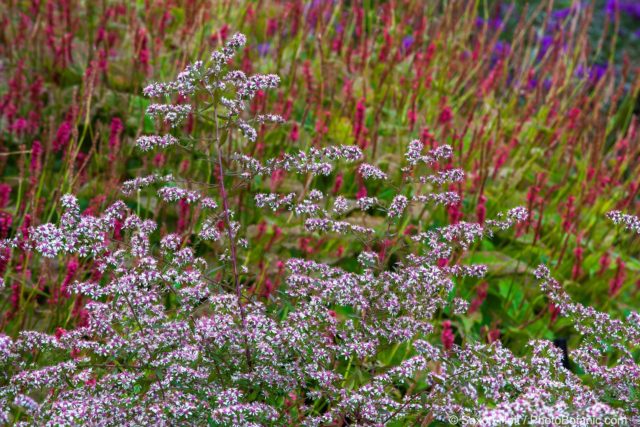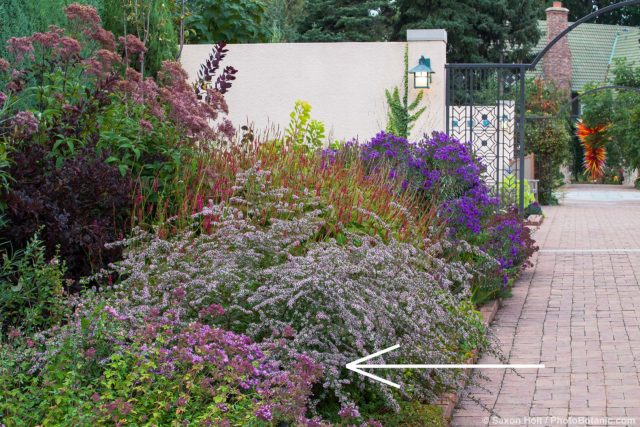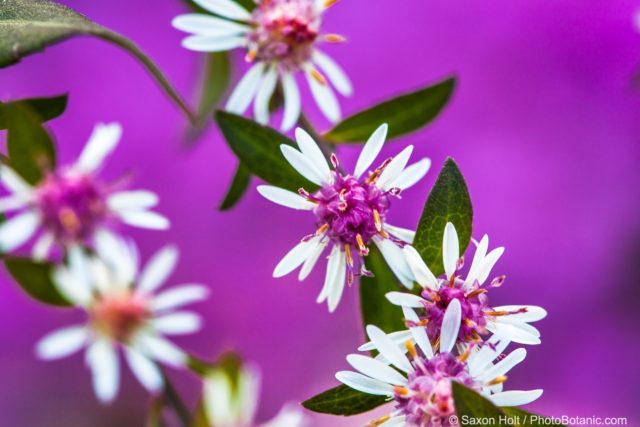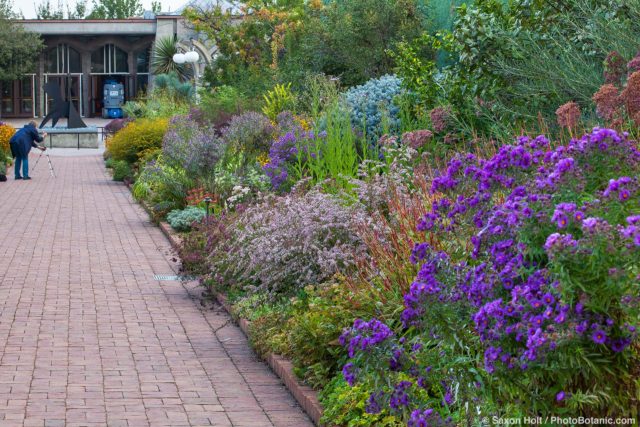For my recent garden photography workshop at the Denver Botanic Garden I used the theme Finding Photos. By “finding photos” I ask students to consider the full frame of the camera to create composition within an overall scene that tells their story.
It is all too common for any garden photographer, flush with excitement in a beautiful garden, to point the camera at a picture and come away with … meh.
Take your time, work the scene, find the photo, make a careful composition, camera on a tripod to slow you down, and then fill the view finder so that every shape, line, color and texture works together like a jigsaw puzzle. Read on:
I had a fantastic group of students for the workshop, and in the early morning, before the Garden was filled with visitors, we had quiet light while working in the stunning double mixed borders.
As soon as I set them loose I saw them gathered around this Calico Aster, ‘Lady in Black’ (Symphyotrichum lateriflorum). Yes, I required them to bring tripods.
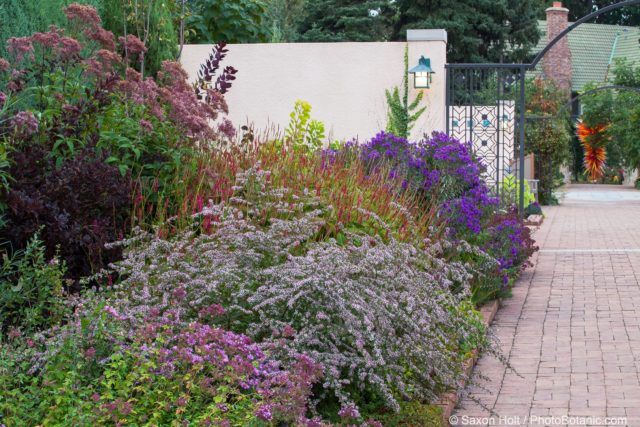
Symphyotrichum lateriflorum ‘Lady in Black’ Calico Aster in flowering autumn mixed border at Denver Botanic Garden
As so often happens in a workshop, the students inspire me. I had not noticed this Calico beauty when I scouted the location, but quickly felt that rush of adrenaline when in the midst of extraordinary plants, with camera, and when the light is right.
What a remarkable combination of plants in this autumn perennial border. It is late September, in Denver, and in glorious flower!
The ‘Lady in Black’ inspires my rapture ? Then look more closely and not simply take the wide view the border. Work the scene, find the special photo.
I am always drawn to shapes and color combinations when I make pictures. The key to using shapes effectively is to enclose them within the frame of the composition. Note here that the Calico Aster uses about two thirds of the composition, with triangles of blue and purple New England asters in opposite corners, and a streak of Red Bistort (Persicaria amplexicaulis) helping to frame the ‘Lady in Black’.
Having the camera fixed on the tripod allowed this careful composition as I studied the scene through the camera view finder while finding the photo. Using a medium zoom telephoto lens I could compress shapes and very deliberately zoom in and out for a precise framing.
As long as I am working the scene, I tried another composition which really plays off the white of the Aster and the red of the Bistort, while still leaving a bit of a blue triangle in the corner.
The clever color combinations in this part of the border create an opportunity for some close-up flower photography. As I have said it many times when discussing macro work, the background is just as important as the main subject.
Remember that magenta flowered New England aster underneath the ‘Lady in Black’?
Looking closely at her flowers I noticed the centers were purple, so by coming overtop I could place the purple asters behind the white one and echo the colors just as the gardener surely intended.
Then if I want to come in really close, I can compose to take full advantage of the shapes created within the frame around the white flowers.
Whenever you find a good situation when shooting the garden, be sure to walk around it and look back the other way. Very often good combinations look good from many angles.
See any photos looking back this way? Want some more tips?
More examples on finding photos from this view are found on the companion blog post on PhotoBotanic: Denver Workshop – Find the Photo
And for more ideas and lessons on Finding Photos check out the ebook “Think Like A Camera” the second in the PhotoBotanic Garden Photography Workshop series.

